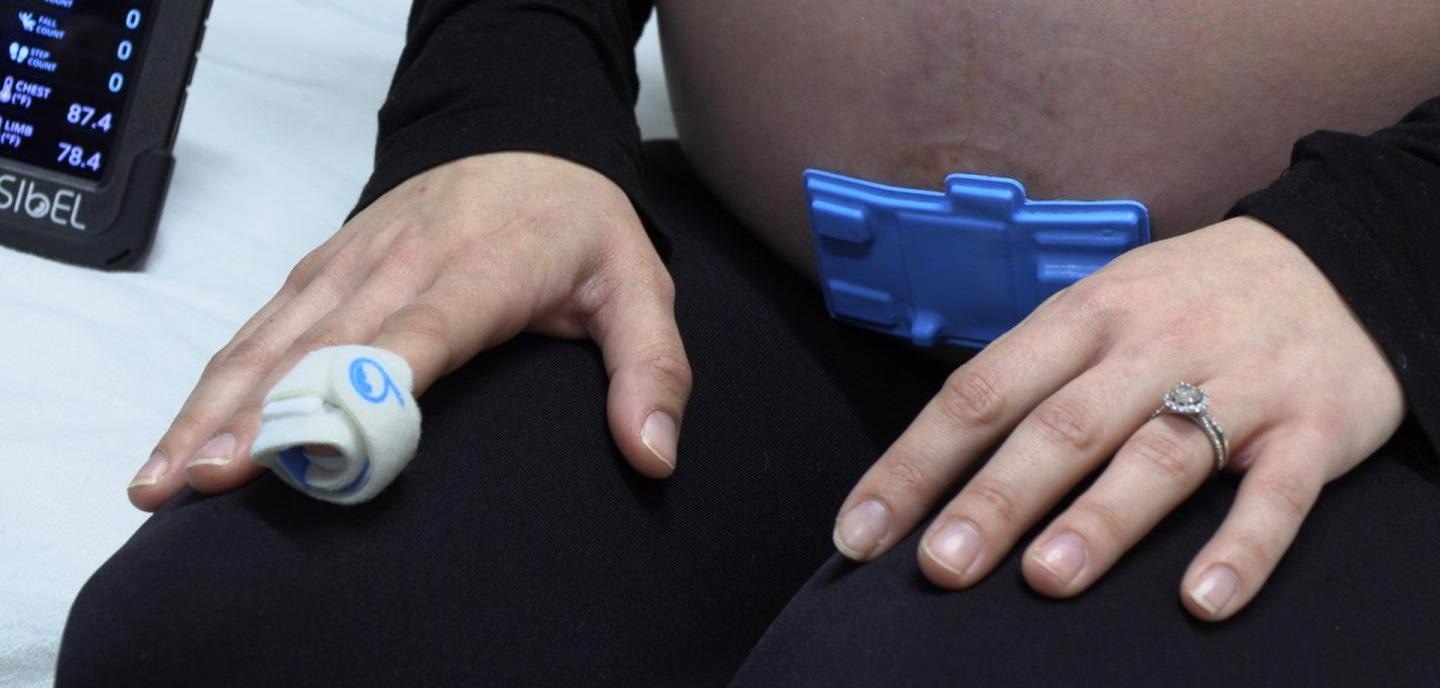
Image Credit: Northwestern University
Innovative, wireless soft sensors have been developed by a team at Northwestern University and the University of Carolina. They are the first to have the capabilities of comprehensively monitoring pregnant women without cumbersome wires. The system comprises three flexible, soft, wireless sensors that are built to allow for movement as well as registering more accurate data. The innovation offers low-cost, advanced technology that will likely transform maternal-child health outcomes and help the technology used for women’s health catch up with other areas of medicine.
Technology for Women’s Health Lags Behind
Technology for women’s health and pregnancy monitoring is lagging. For decades, women have been offered the same technology to help monitor them while giving birth. While the technology used in other fields of medicine has vastly changed over the decades, women giving birth today are likely using similar equipment to their mothers.
Women in labor are asked to wear polyester fetal-monitoring belts that are cumbersome, can slip out of place, and require constant monitoring themselves so that they are kept in the correct place. In addition, wires are required to be taped to the mother which limits her ability to move or walk around freely. This reduces the woman’s choice to choose positions and movements that are comfortable to her while in labor.

Women giving birth currently experience the use of monitoring equipment that features obtrusive belts and wires. Image Credit: Mut Hardman/Shutterstock.com
Now, a team of researchers at Northwestern University and the University of Carolina have established three new wireless, soft, flexible, small sensors to replace the decades-old belt and wires system.
New Sensors Exceed Precision and Accuracy of Traditional Systems
The three sensors have been developed to measure both the mother's and baby’s vital signs. In addition, the team has equipped the sensors with the capability of collecting new data that has not previously been available to other sensors, such as information about the mother’s movements and positions. Because the sensors are wireless, it also opens up the opportunity to relay the data directly to a smartphone or tablet that can be monitored by the physician.
It opens up the opportunity of remote monitoring, something that has been of great importance during the pandemic and will likely continue to be beneficial. For example, experts could be called in from anywhere on the planet to assess pregnancy monitoring to improve maternal-child health outcomes. It may also be particularly beneficial to mothers living in rural areas.
The scientists who worked on the project aimed to produce sensors with the same gold-standard level of monitoring, but in a new, affordable, accessible, and patient-centric device. A study that tested the efficacy of the new system, published this year in the journal the Proceedings of the National Academy of Sciences, demonstrated that the new sensors exceeded the capabilities of current systems in terms of precision and accuracy. The study collected data from more than 500 women who wore the new wireless sensors and traditional system during labor.
The team is now looking to expand its research by testing the wireless sensors on 15,000 women at different stages of pregnancy. So far, the data is promising.
Soft Sensors for Wireless Monitoring During Labor
Video Credit: Medgadget/YouTube.com
Improving Maternal-Child Health Outcomes
To ensure the safety of the mother and baby during labor, health care workers attach multiple continuous monitoring systems to the mother via two separate belts strapped around the abdomen. These traditional systems measure the baby’s heart rate, as well as different aspects of the mother’s contractions, such as the length, strength, and frequency. In addition to these belts, wired electrodes are also taped to the mother to collect data regarding her heart rate, heart activity, and blood oxygen levels.
The system proposed to replace this old, cumbersome system is one comprised of three wireless sensors that are small, thin, flexible, soft, and ergonomically designed to adhere securely to the mother’s skin. The first is a small device incorporated with Doppler technology that fits the curve of the abdomen and monitors the mother and baby’s heart rate. The second device is the size of a postage stamp, which adheres to the mother’s chest, collects data on her heart as well as her core body temperature. The third and final sensor has been developed to wrap securely around the mother’s finger to monitor her oxygen levels as well as her peripheral body temperature.
The wires of the previous system limited its potential accuracy. The wires created forces on the sensors that they were attached to, producing electrical noise and distorting data. Now, the new wireless system is free of this limitation and can, therefore, collect clearer data. This more accurate data means that concerning data can be flagged more easily and with more certainty, which may translate to blood pressure disorders being identified more rapidly. This may improve maternal-child health outcomes since blood pressure disorders are a major cause of morbidity and mortality in pregnancy.
References and Further Reading
Ryu, D., et al. 2021. Comprehensive pregnancy monitoring with a network of wireless, soft, and flexible sensors in high- and low-resource health settings. Proceedings of the National Academy of Sciences, 118(20), p.e2100466118. https://www.pnas.org/content/118/20/e2100466118
Soft sensors are first to comprehensively monitor pregnant women without wires. EurekAlert. Available at: https://www.eurekalert.org/pub_releases/2021-05/nu-ssa050521.php
Soft Sensors for Wireless Monitoring During Labor. Conn Hastings. Medgadget. Available at: https://www.medgadget.com/2021/05/soft-sensors-for-wireless-monitoring-during-labor.html
Disclaimer: The views expressed here are those of the author expressed in their private capacity and do not necessarily represent the views of AZoM.com Limited T/A AZoNetwork the owner and operator of this website. This disclaimer forms part of the Terms and conditions of use of this website.